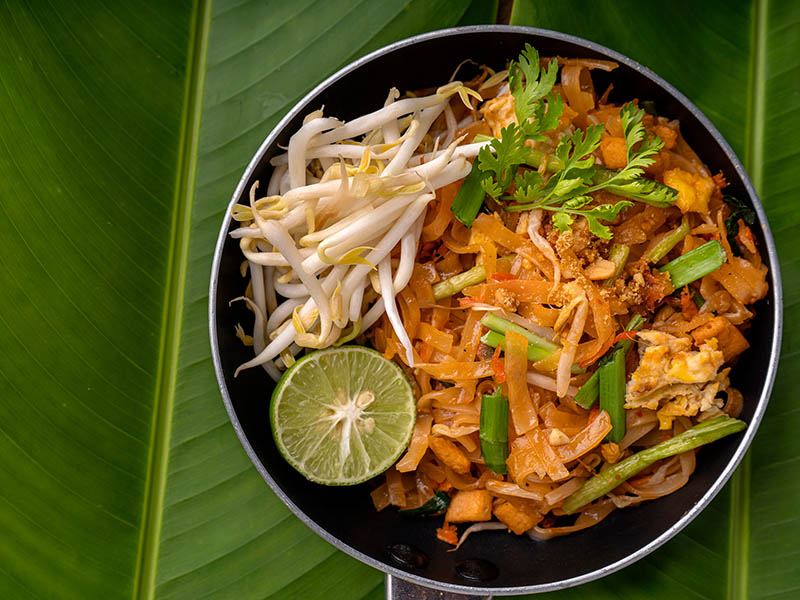
These types of Thai noodles have always been my favorites. If Thai cuisine is also your passion, keep scrolling down the page! After reading this article, you will also fall for Thai food, especially noodles.
In the content below, I will give you all the essential information about Thai noodles varieties. This article also presents the most popular noodle dishes so that you know Thai people use them in different recipes. Let’s get started!
6 Most Famous Types Of Thai Noodles You Need To Know
First of all, here are 6 varieties of Thai noodles that I want to show you today. They differ in shapes, ingredients, and textures. Below is detailed information about them.
1. Wide Rice Noodle (Sen Yai)
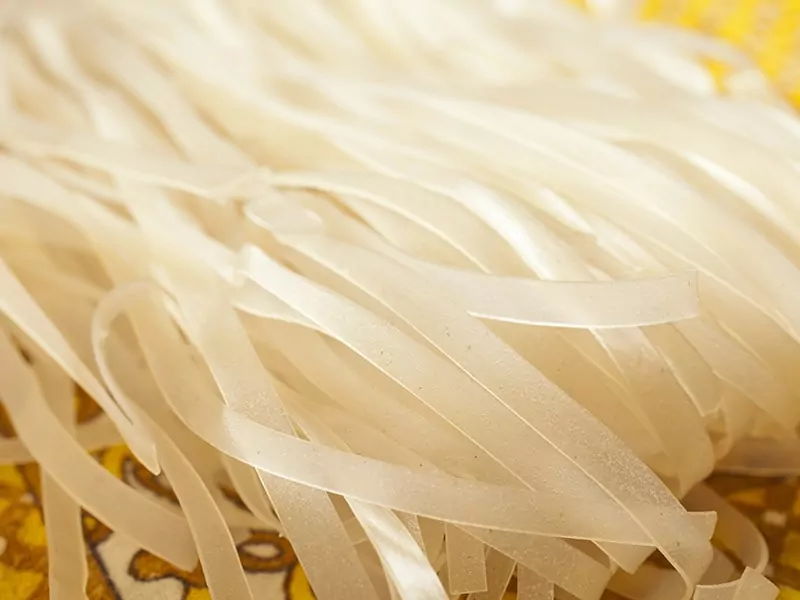
As the name suggests, this type of noodle is made from rice flour and water. It has a wide shape. Fun fact: “Yai” means “wide” in English.
The strands are soft and mouth-meltingly tender. They are slippery yet very sticky. People use this noodle to make some classic dishes, such as Phad See Lew (Drunken Noodles) and Guay Tiew Naam.
Use Sen Yai noodles to make this delicious stir-fried noodle dish!
2. Thin Rice Noodles (Sen Lek)
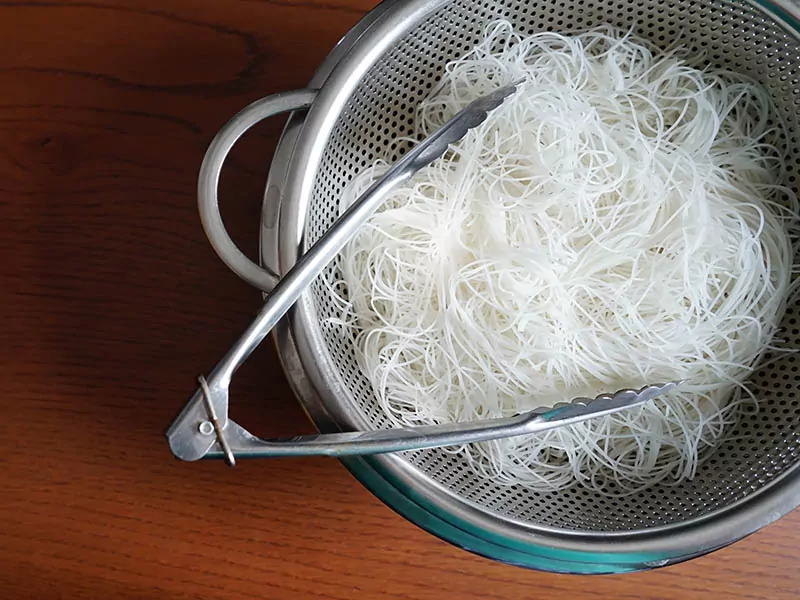
Sen Lek is just as thick as linguine – a popular pasta variety. Since they are so thin, people name them “Lek”, which means small in English.
Thin rice noodles are very versatile. You can serve them with broth or use them to make spring rolls or in steamed/fried dishes. The most famous dish that contains this noodle is Pad Thai.
3. Very Thin Rice Noodles (Sen Mee)
Sen Mee is also a type of rice vermicelli. However, it is extremely thin, fine, and delicate. It is even thinner than Sen Lek. This noodle is used to make stir-fried noodle dishes, salad, and soup. People make it from rice flour and water, similar to other types of rice noodles.
4. Curly Noodles (Mama)
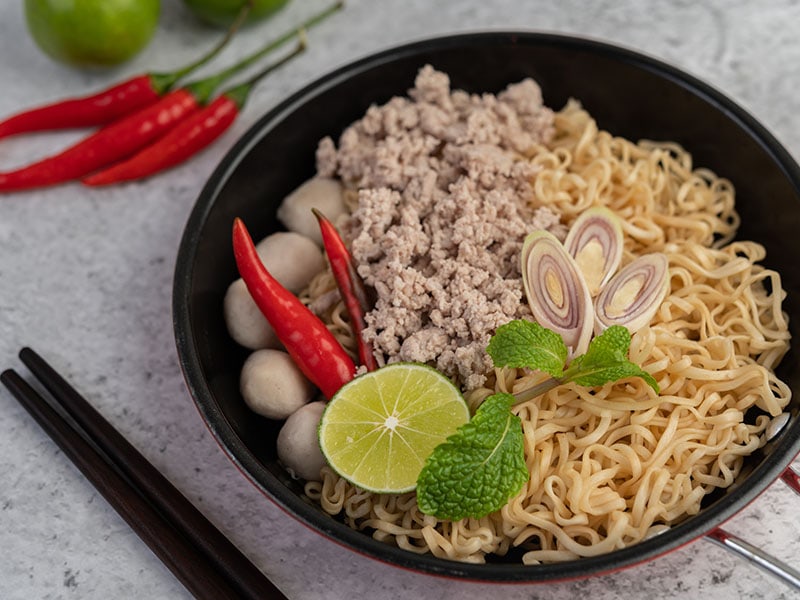
Unlike other varieties, which have a straight shape, Mama noodles are curly and have a yellow color. They are a type of ramen noodles consisting of rice.
Apart from the traditional way of serving instant noodles, people use Mama in various dishes, such as stir-fried dishes and noodle soup. They fry it in a wok with oil, vegetables, and proteins such as pork or shrimp.
5. Bean Thread Noodles (Woon Sen)
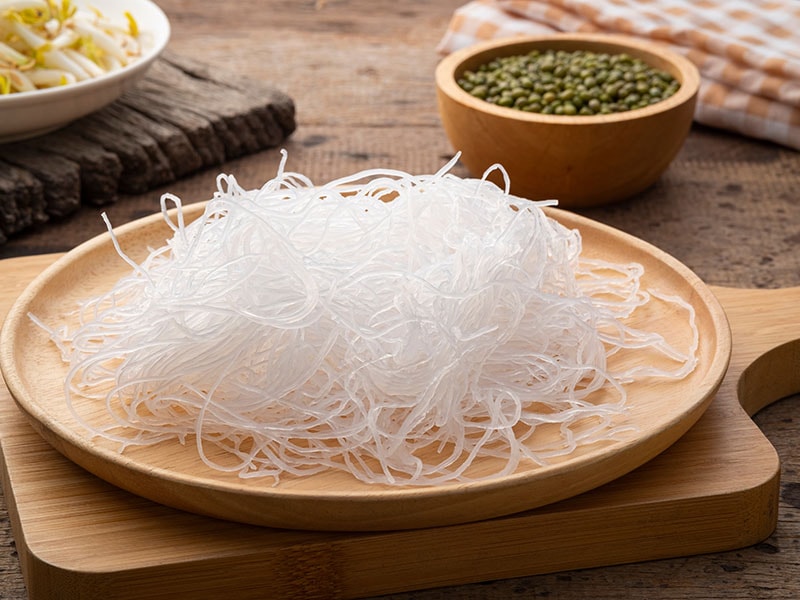
Other names for this type of noodles are glass noodles, cellophane noodles, or mung bean noodles. Their main ingredient is ground mung beans. What people like about this type of noodles are their mild taste and slippery texture. It also has a transparent look.
Besides Thai cuisines, they are also popular in other cuisines, such as Chinese and Vietnamese cuisine.
6. Egg Noodles (Bah Mee)
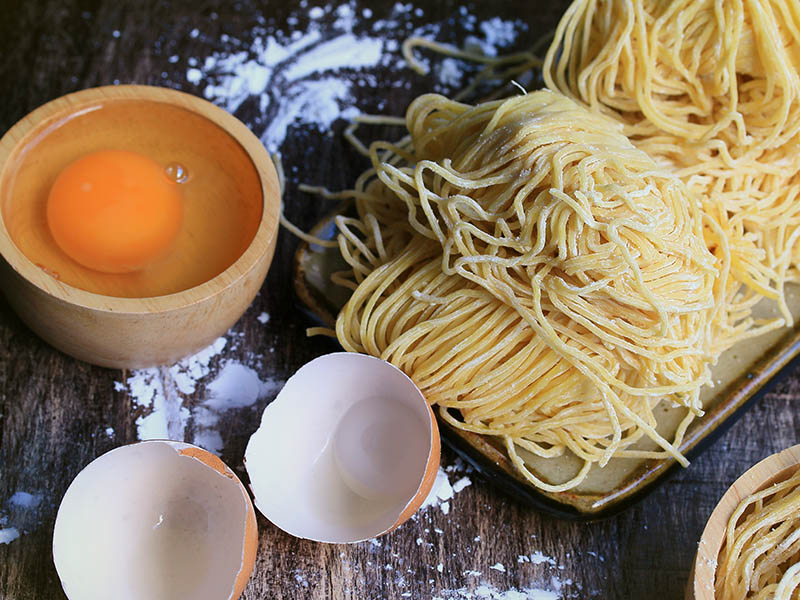
I bet that egg noodles are very familiar to you. They are not only popular in Thai cuisine but also in Chinese, Japanese, and other cuisines in Southeast Asian countries. They have a yellow color due to the egg yolk ingredient.
Compared to other noodles, egg noodles have a richer flavor because of the protein content of egg yolks. They are also more umami. It is best to serve them al dente.
13 Thai Noodle Dish That Will Amaze You
Thanks to its unique and tasty flavor, many Thai noodle recipes have become people’s favorite dishes around the world. In this section, I will show you the top 13 noodle delicacies that you can make at home.
1. Yen Ta Fo (Pink Noodle Soup)
You can recognize Yen Ta Fo by the beautiful pink color. This color comes from fermented bean paste. The soup consists of chicken or pork broth and spicy fermented red bean curd. It has a distinctive tangy flavor.
The toppings include squid, fried tofu, jellyfish, and morning glory (aka water spinach). You can enjoy Yen Ta Fo with any type of Thai noodles.
Let’s learn to create the lovely pink color of Yen Ta Fo.
2. Kuai-Tiao Ruea (Boat Noodles)
This recipe consists of pork, beef, pickled bean curd, and dark soy sauce. These ingredients create an incredibly strong flavor that is the signature of Thai cuisine. You can also find bean sprouts, parsley, and fried garlic in Boat noodles.
Interestingly, people add pig or cow blood, salt, and spices to the soup to thicken it and make it bold and flavorful. People often serve Boat noodles with meatballs and pig’s liver.
Boat noodles go well with various noodle types, including wide rice noodles, thin rice noodles, and egg noodles.
3. Khao Soi (Thai Coconut Curry Noodles)
Khao Soi came from Northern Thailand. It has been a prevalent Thai dish for years.
The soup is made from curry, chicken, pork, and beef. This type of noodles also consists of coconut milk. The dish consists of egg noodles. For more specific, it is wide egg noodles.
As for the toppings, people mostly serve Khao Soi with chicken, pork, and beef. They also top it with vegetables such as chilis, lime, pickled cabbage, and cilantro. Common toppings include tomatoes, fermented bean paste, and fresh herbs.
There are a lot of versions of Khao Soi. Lao Khao Soi is a delicacy of Burma and Northern Thailand. The soup contains beef, pork, and chicken. People make wide rice noodles for Lao Khao Soi.
Khao Soi Islam or Northern Thai Khao Soi consists of a delicious soup made from curry, coconut milk, and egg noodles. People often boil or deep-fry them.
This will be the best Chicken Khao Soi recipe you have ever tried.
4. Pad See Ew (Stir-Fried Noodles)
The name Pad See Ew means “fried with soy sauce.” It is also a stir-fried dish consisting of Sen Yai (wide rice noodles), light soy sauce, dark soy sauce, and eggs.
The protein sources for Pad See Ew are beef, chicken, shrimp, and seafood. People slice the meat into thin pieces before serving it.
There are different varieties of Pad See Ew, depending on the type of noodles that people use to make it. Sometimes, they use thin rice noodles. That variety is Sen Mi Phat Si-Io. If they used egg noodles, the dish is named “Mi Lueang Phat Si-Io”.
5. Mi Krop (Crispy Fried Noodles)
Mi Krop noodle has a delicious sweet and sour taste. It is a very delicious starter for any Thai dish. It consists of fish sauce, tomato paste, and lime juice.
This noodle is different from other types of Thai noodle soup thanks to the use of deep-fried rice vermicelli noodles. In addition, the soup is very sweet. Sometimes, people give it tangy notes by adding a Thai citrus fruit named “Som Sa”.
The toppings of this delicious vermicelli noodle delicacy are rich in protein. They often include fried tofu, fried egg strips, and pork meat. They also have some herbs and vegetables, such as cilantro, chilis, and bean sprouts.
The crispy texture of Mi Krop will blow your taste buds.
6. Pad Woon Sen (Thai Glass Noodle Stir-Fry)
Pad Woon Sen features stir-fried Pad Woon Sen noodles with veggies such as carrots, cilantro, Thai bird chili, and cabbage. Some versions also have eggs or chicken.
People season Pad Woon Sen noodles with fish sauce, soy sauce, oyster sauce, and white pepper. They all create an amazing savory flavor that will give you a great culinary experience.
7. Bami Haeng (Spicy Egg Noodles)
Bami Haeng is a noodle dish ideal for serving in fall or winter. “Bami” means “egg noodles” in the Thai language, while “Haeng” refers to “dry”. As the name suggests, people serve the noodles and broth separately.
Actually, Bami Haeng starts out as a variety of Chinese noodles. People serve them with braised duck, roasted chicken, and blood tofu. It also includes veggies such as bok choy and scallion. Crushed nuts and fried garlic are also very common.
8. Pad Kee Mao (Drunken Noodles)
Although its name is Drunken Noodles, it does not make you drunk. It is a stir-fried noodle dish that is very popular in Thai cuisine that is available at street food stalls as well as restaurants.
Pad Kee Mao consists of Sen Yai (wide rice noodles), fish sauce, seafood, and oyster sauce. In some regions, people also use eggs.
There are also vegan versions, which make a tasty Asian vegetarian dish. People use tofu instead of meat for protein and add more vegetables such as broccoli, bell peppers, and snow peas.
The recipe for Pad Kee Mao varies a lot. Sen Yai is not the only type of noodles that they use. They also use Pad Thai noodles, spaghetti, instant noodles, or chewy rice noodles.
Are you curious about why its name is “Drunken Noodles”? There are a lot of theories that explain its name. Some people say people often eat it after drinking. Some believe that it emerged because of mispronunciation.
Are you curious about the method to make these special Drunken noodles?
9. Pad Thai
When mentioning Thai cuisine, most people will think of Pad Thai. It is a stir-fried dish with a salty, tangy, and sweet taste. It is a very popular street food in Thailand.
The key to that unique flavor is fish sauce, tamarind juice, palm sugar, chili pepper, and dried shrimp. On the plate, people also place lime wedges and roasted peanuts.
They also serve Pad Thai with shrimp and vegetables such as banana flowers, bean sprouts, and pickled radishes.
The cooks make Pad Thai by stir-frying all ingredients in a wok. Then they stir in Pad Thai sauce to create a unique flavor. Serve it alongside an appetizer that belongs to the amazing Asian cuisine.
If you are a vegetarian, you can also enjoy the vegan version of Pad Thai. People use soy sauce instead of fish sauce and leave out shrimp.
This Pad Thai recipe is perfect for lunchtime.
10. Kuaitiao Khua Kai (Stir-Fried Chicken Noodles)
Kuaitiao Khua Kai originally came from Chinese cuisine. You will see that Chinese and Thai cuisine has several differences.
Nowadays, it has become one of the most popular dishes in Thailand. It is also a stir-fried dish with wide rice noodles. But it is different from Pad Thai in that people use chicken instead of shrimp to make it.
Besides chicken, people also serve it with squid, eggs, lettuce, sliced tomatoes, and dough sticks. Poached eggs are also common toppings.
To make delicious Kuai Tiao Khua Kai, the cooks use a lot of seasonings, such as fish sauce, oyster sauce, soy sauce, vinegar, and sugar.
11. Nam Ngiao (Pork Rib Noodle Soup)
Nam Nghiao also came from China. It is popular among Tai Yai people who reside in Burma, Yunan. Over time, it has gained popularity in the north of Thailand thanks to its distinctive tangy and spicy taste.
People make Nam Ngiao from fermented thin rice vermicelli. A wide range of vegetables is present, such as chopped tomatoes, garlic, and roasted or fried chilies. It also has meat, namely beef and pork. Pork rinds are a very common side.
Nam Ngaio has a special ingredient: Tua Nao (fermented soya bean). It gives the noodle a unique flavor that is hard to find in other dishes.
12. Rat Na (Rice Noodles With Gravy)
Rat Na is also a dish originating from China. People make it by stir-frying wide rice noodles with protein sources such as chicken and vegetables such as straw mushroom, garlic, and Gai Lan (Chinese broccoli).
Accompanying the noodle is a thick sauce consisting of either cornstarch or tapioca starch, sweet soy sauce, sugar, and fish sauce.
On the top of the dish, people add some sugar, preserved chilies, fish sauce, and ground dried chilis.
People also use other types of noodles to make Rat Na, namely thin rice noodles or deep-fried thin egg noodles. When they use crispy egg noodles, they pour the sauce on top of them to make them softer.
13. Kuaitiao Sukhothai (Sukhothai Rice Noodles)
This Thai noodle features thin rice noodles served with soup and toppings. The broth mainly consists of pork. The toppings can be ground pork, crackling, ground peanut, and salted turnip. People season it with mellow, lime, fish sauce, and ground chili.
In Nakhon Si Thammarat, people serve Sukhothai rice noodles with streaky boiled pork, thin-sliced green beans, and swamp cabbage.
It is believed that this type of Thai noodle dish originated in the Ayutthaya era due to the trade between China and Thailand.
Thai Noodles Will Please Your Taste Buds
Thai noodle dishes have very distinctive features and unique tastes. I am sure that you don’t want to miss any of them. I would head to a Thai restaurant and try a noodle dish immediately if I were you.
Making these dishes at home is also a good idea. But I recommend trying the original flavor first before creating that flavor yourself. Finally, if you like this article about Thai noodles, please kindly give it a like and share.
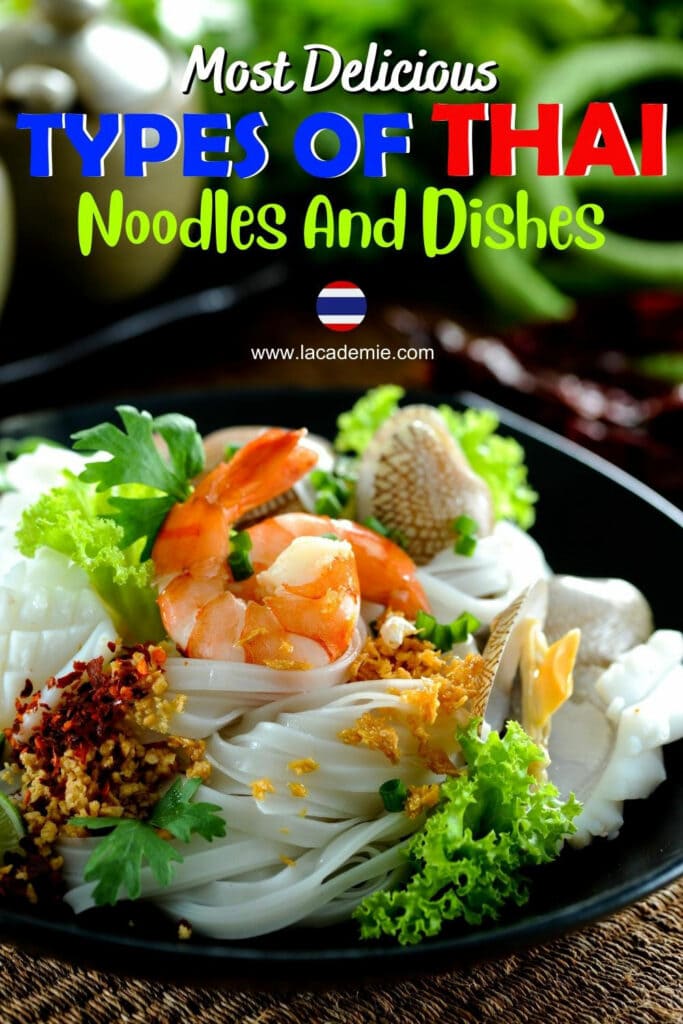


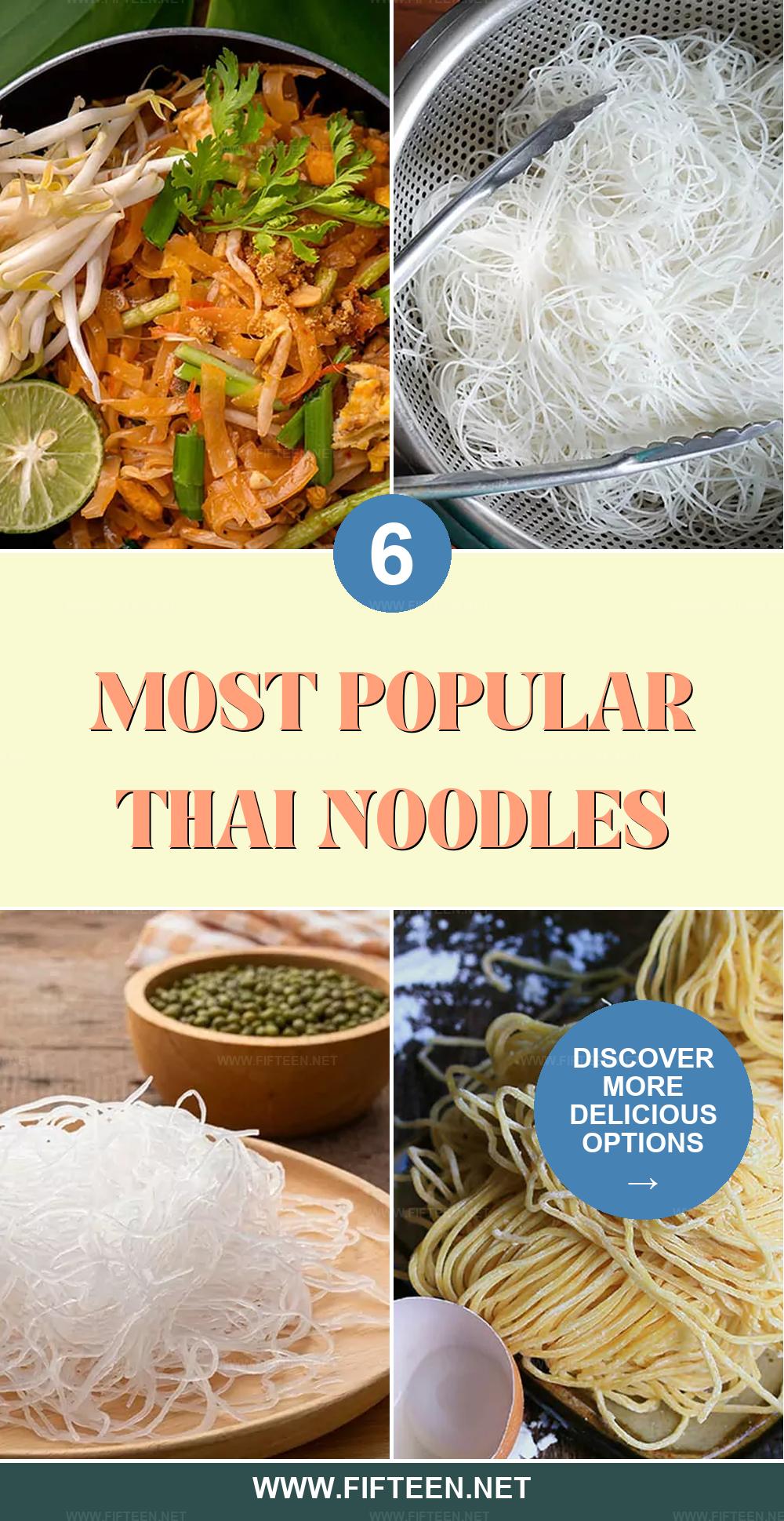
Jamie Scott
Editor in Chief, Senior Content Writer
Expertise
Home Cooking, Meal Planning, Recipe Development, Baking and Pastry, Food Editor, Cooking-video Maker, Western Food Evaluation Expert
Education
Le Cordon Bleu College of Culinary Arts
Local Community College, New York, NY
Jamie Scott is a skilled culinary expert and content creator specializing in Western cuisine. With over 15 years in the culinary field and formal training from Le Cordon Bleu, Paris, Jamie deeply understands how to blend nutrition with delicious flavors. His passion for cooking matches his commitment to making healthy eating accessible and enjoyable.
On Fifteen.net, Jamie brings a fresh perspective to classic dishes and beverages, offering readers insightful recipes, cooking tips, and a fresh view on meal planning that emphasizes taste, health, and simplicity.